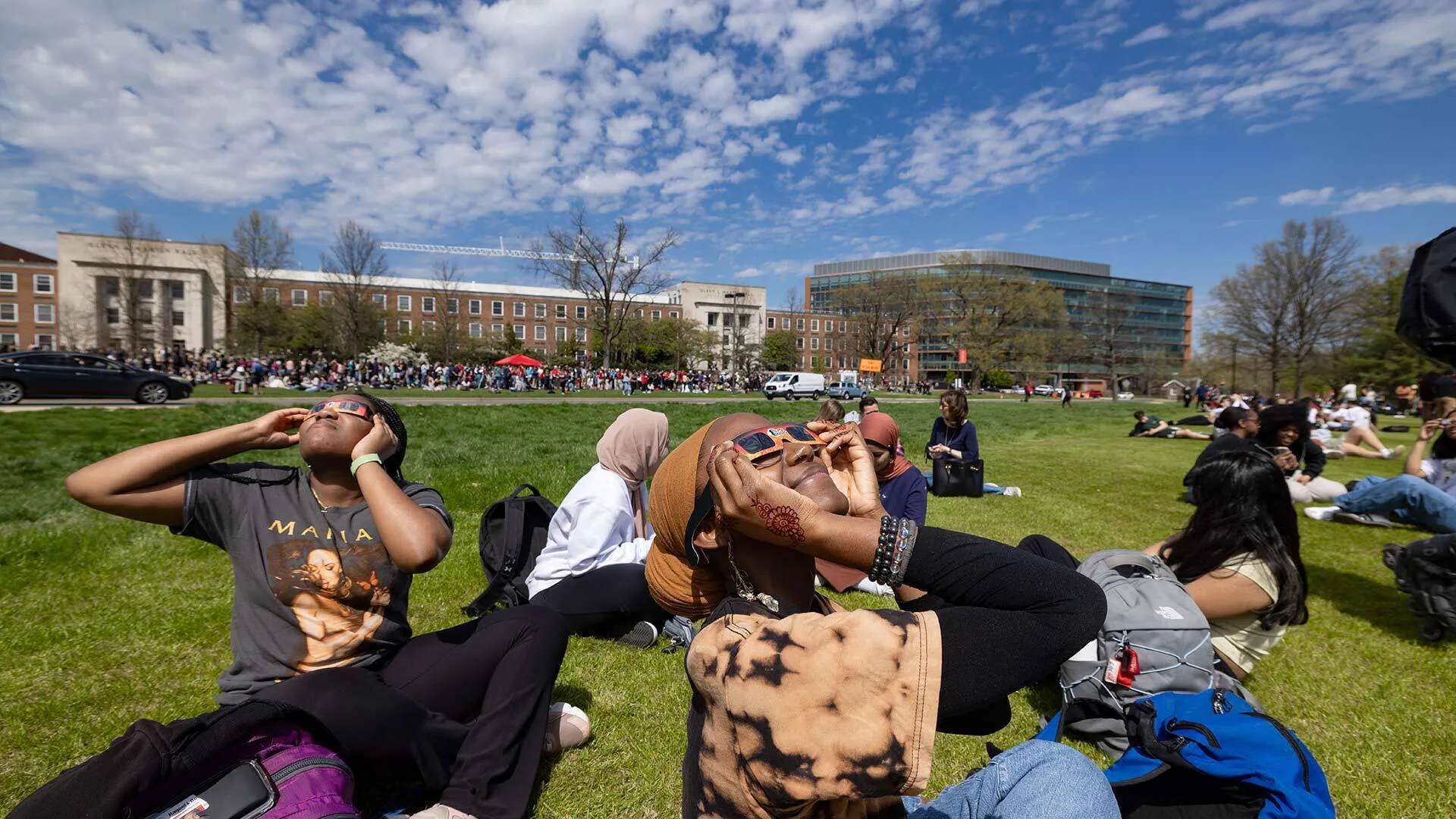- April 09, 2024
- By Sala Levin ’10
Protective paper shades perched on their noses, faces tilted toward the sky, thousands of students, faculty and staff clapped and cheered at the peak moment of Monday’s solar eclipse.
At a viewing party hosted by the College of Computer, Mathematical, and Natural Sciences and the Department of Astronomy outside Glenn L. Martin Hall, and all across McKeldin Mall, the atmosphere was festive: Students blew bubbles, posed for selfies in their eclipse gear, savored scoops of Maryland Dairy ice cream, tossed footballs and even did a little homework as they waited for the darkness—well, dimness—to descend.

On the University of Maryland campus, hundreds of miles from the path of totality that stretched from Texas to Maine, the moon’s journey across the sun’s surface began at 2:04 p.m., according to the Naval Observatory’s solar eclipse computer.
Passing clouds occasionally covered, then revealed, the narrowing yet blindingly bright sliver of fire. The air noticeably cooled.
By 3:20, when it had covered 87.6% of the sun—the height of the event in College Park—a twilight haze had enveloped the crowd. For most of the students gathered outdoors, this was the most significant eclipse of their lifetimes.
“Seeing it as it fully went over the sun was pretty cool,” said Melissa Guillen ’26. For her friend, Valery Caicedo ’26, the people-watching was at least as good as the astronomical event. “The rush for getting glasses—the line was so long,” she said. “It literally went around the whole building.” (Caicedo didn’t wait in the line; she simply took a pair of glasses offered by volunteers milling through the crowd.)
Others were intrigued by the spaciness of it all. “We’re doing a space-based project for our synthetic biology class,” said Brooke Wunderler ’25, who was eating ice cream with bioengineering classmates Audrey Vassia ’25 and Vanshika Shah ’25. “We’re looking at muscle atrophy in astronauts, so we all have a little knack for space.”

Terps keeping tabs on the eclipse wasn't just an on-campus activity. Managers of the Maryland Mesonet, a UMD-led weather monitoring collaboration with the state of Maryland, reprogrammed the nine weather towers in its growing network to track the eclipse.
Instead of just providing information on potential hazardous weather or crop conditions like it does on normal days, the system took measurements of solar radiation, temperature and other variables affected by the eclipse every three seconds; the data will be made freely available to scientists studying the impact of the rare event, said project leader Sumant Nigam, chair of the Department of Atmospheric and Oceanic Science.
